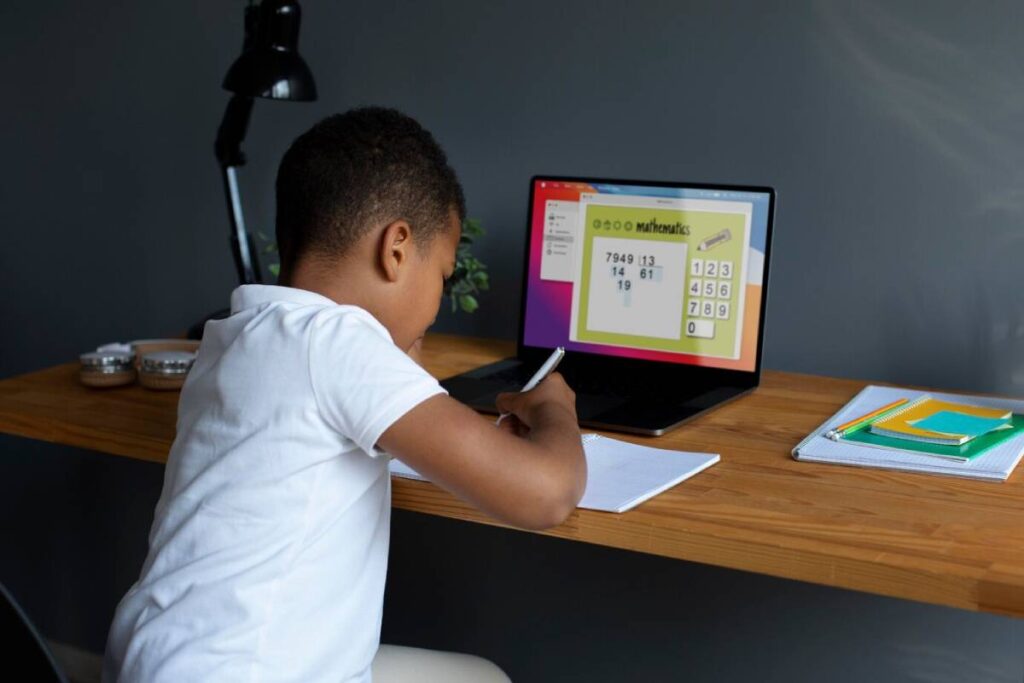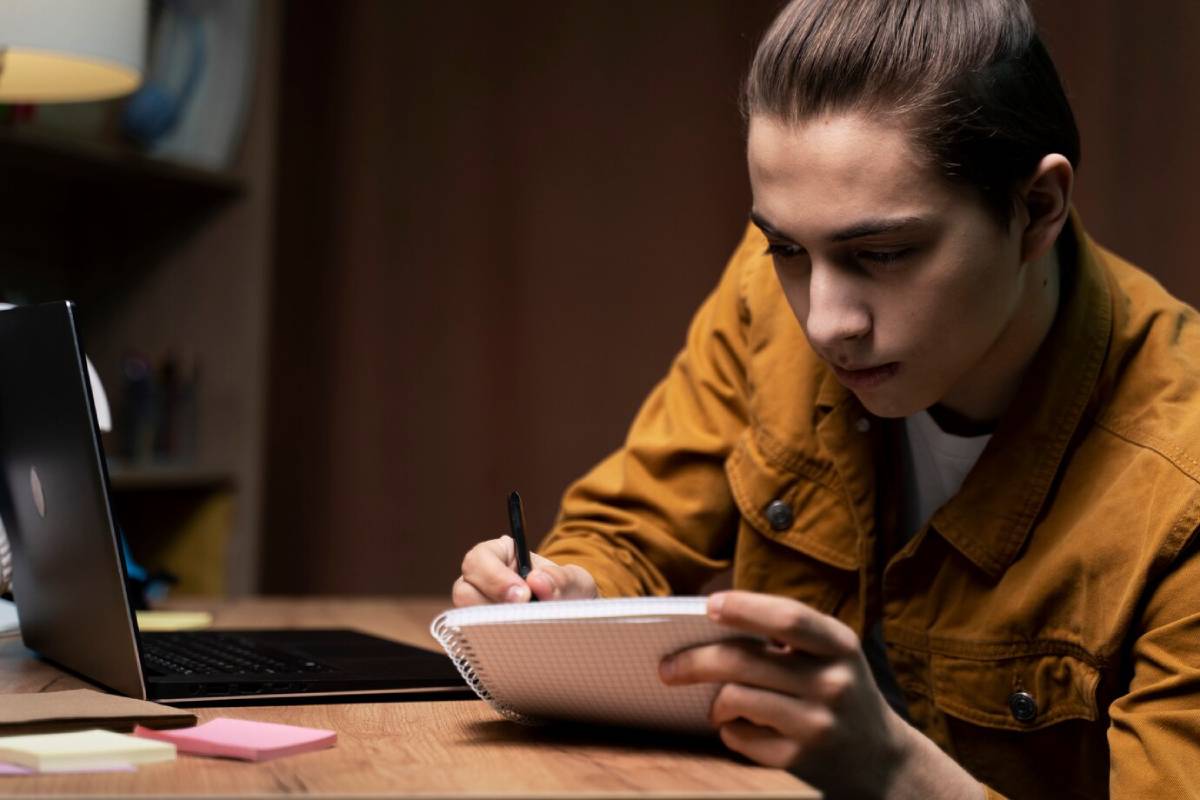The Parenting & Family Blog

How to Use Tech for Learning Without Overuse
Technology is an integral part of our daily lives in the digital age, especially in education. Technology has changed how we learn. From interactive apps to virtual classrooms, it has made learning more engaging. However, with great power comes great responsibility. Too much technology can cause problems. It may reduce attention spans and lead to digital fatigue. This article, updated in October 2023, looks at balancing technology in education. It offers practical tips for using tech effectively for learning while avoiding overuse. Educators and parents can set clear boundaries and encourage mindful use of technology. This helps students enjoy tech-enhanced learning and stay healthy and well.
Pro Tip: Have students take regular breaks from screens. This helps rest their eyes and prevents digital fatigue. Use blue light filters during evening sessions to reduce sleep disruption.
Important: Avoid using technology as a substitute for traditional teaching methods. It should enhance, not replace, face-to-face instruction. Over-reliance on tech can make students passive rather than active learners.
Quick Guide: How to Use Tech for Learning Without Overuse
- Set Clear Boundaries: Choose specific times to use technology. Be sure to take breaks to rest your eyes and stretch. Use timers or apps that remind students to pause regularly.
- Select Quality Content: Choose trusted educational apps and websites that fit your learning goals. Avoid apps that are heavy on entertainment and light on academic value.
- Encourage Active Learning: Use technology to engage students. Try interactive activities that spark critical thinking and creativity. Examples include digital storytelling and coding challenges.
- Encourage Offline Activities: Balance screen time with fun activities. Try reading, playing outside, doing art, and working on hands-on projects. Encourage movement and social play.
- Check Progress: Regularly check how well tech-based learning tools are working. Make changes when needed. Gather feedback from students to understand what’s working and what’s not.
Understanding the Core
The main idea of using technology for learning is to find a balance. Technology can boost learning. It gives access to a lot of information and fun tools. Too much screen time can cause problems like eye strain, bad posture, and less physical activity. It can also negatively impact sleep patterns, social development, and mental health.
Balancing educational tech means using it as a tool, not a crutch. Integrating technology into learning needs careful planning. It should support traditional methods, not replace them. Encouraging students to reflect on their screen time helps them discuss their experiences. They can also find what works best for their learning style. This supports a more balanced approach.
The Role of Educational Tech

Educational technology includes many tools and platforms that help with learning. These include learning management systems, educational apps, virtual labs, and online resources. These tools aim to make learning fun, easy, and personalised.
Language learning apps create fun experiences that encourage practice. Science simulations help students see and understand complex processes. However, these tools can become distractions when used excessively or without thoughtful guidance. Educators should assess which tech tools truly aid learning goals. They need to avoid overwhelming students with too many resources at once.
The Impact of Learning Screens
Screens are essential in today’s education, including tablets in classrooms and laptops for homework. They are convenient and provide access to information. But it’s important to watch how much time we spend in front of them. Too much screen time can hurt your sleep, make you less active, and reduce face-to-face interactions.
Too much screen time can also lead to digital fatigue, a kind of mental tiredness caused by long-term use of tech. Symptoms include headaches, eye discomfort, irritability, and a general decline in focus. Balancing screen time with off-screen time is key for good health and helps promote a variety of learning experiences.
Step-by-Step Guide (How to Practise)
Step 1: Assess Current Technology Use
Begin by evaluating how technology is currently used in your learning environment. List the tools and platforms being used. Then, check how well they meet the learning goals. Monitor how much time students use digital tools daily and note their activities.
Step 2: Set Technology Goals
Establish clear goals for technology use in education. Decide on your goals for using educational technology. Think about how it can enhance traditional learning methods. You might use digital quizzes to reinforce knowledge. You can also use virtual labs to simulate science experiments that are tough to do in person.
Step 3: Implement a Balanced Schedule
Create a schedule that balances screen time with offline activities. Ensure that students have physical activity, social interaction, and creative play opportunities. Use the 20-20-20 rule: every 20 minutes, take a 20-second break and look at something 20 feet away to reduce eye strain.
Step 4: Select Appropriate Tools
Choose educational tools and resources that align with your learning goals. Look for apps and platforms that offer interactive and engaging content. Evaluate whether these tools are age-appropriate, user-friendly, and evidence-based. Provide variety to avoid overreliance on one platform.
Step 5: Monitor and Adjust
Review the effectiveness of your technology use regularly. Make adjustments as needed to ensure that tech-based learning remains balanced and beneficial. Include student self-assessments and parent-teacher feedback loops in the review process. Adapt the tech plan as needs evolve.
Best Practices & Additional Insights
Encourage Collaboration
Use technology to foster collaboration among students. Online forums, shared documents, and digital project platforms boost communication and teamwork. These collaborative environments mirror real-world professional settings and build social skills.
Promote Digital Literacy

Teach students how to use technology responsibly. Digital literacy means checking sources, keeping your online privacy, and interacting politely in digital spaces. Embedding these skills into lessons prepares students for lifelong digital engagement.
Incorporate Feedback
Gather feedback from students and educators on the effectiveness of tech-based learning tools. Use this feedback to make informed decisions about using technology in education. Use surveys or quick check-ins to measure user satisfaction and find areas for improvement.
FAQs
What is the ideal amount of screen time for students?
The ideal amount of screen time varies depending on age and individual needs. Recreational screen time should be kept under two hours a day. For educational purposes, frequent breaks and varied activities are key.
How can I ensure that educational apps are effective?
Check for apps made by trusted educational institutions. Look for good reviews from teachers and parents. Test apps yourself before introducing them to students. Check for alignment with curriculum standards and learning objectives.
What are the signs of digital fatigue?
Signs of digital fatigue include eye strain, headaches, irritability, and difficulty concentrating. Encourage regular breaks from screens to alleviate these symptoms. Consider integrating mindfulness or stretching exercises into breaks to boost recovery.
Conclusion: How to Use Tech for Learning Without Overuse
In conclusion, using technology for learning without overuse requires a balanced approach. Set clear boundaries, choose quality content, and promote offline activities. This way, you create an engaging and effective learning environment. The goal is to improve education. We want a healthy mix of digital and traditional learning methods.
Call to Action: Explore our curated list of educational apps and resources to enhance your learning experience. Visit our website for more tips on balancing technology use in education.
These guidelines help you use technology well in education. This enhances learning and prevents overuse. Embrace the benefits of educational technology, but remember to maintain a healthy balance.









